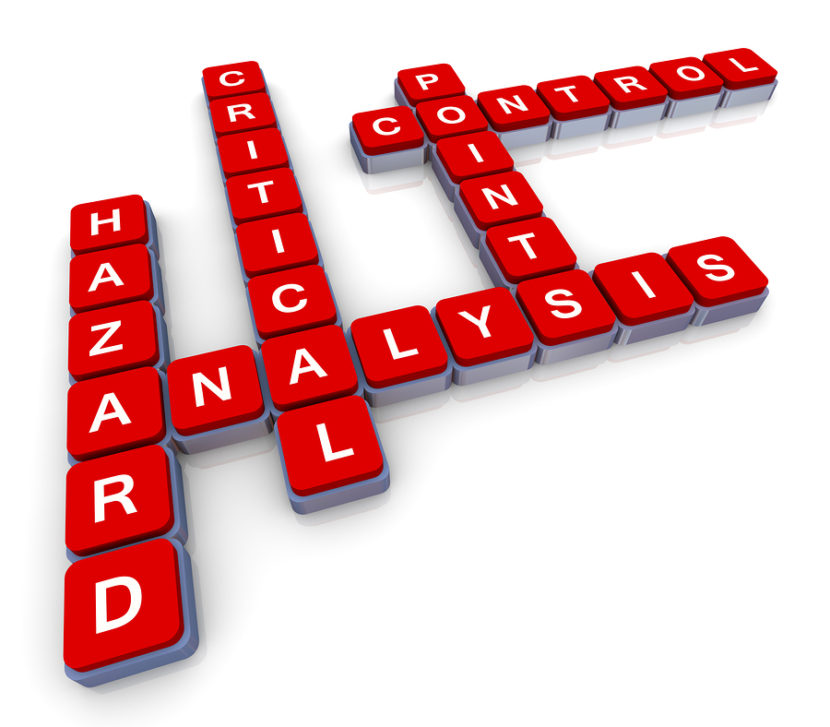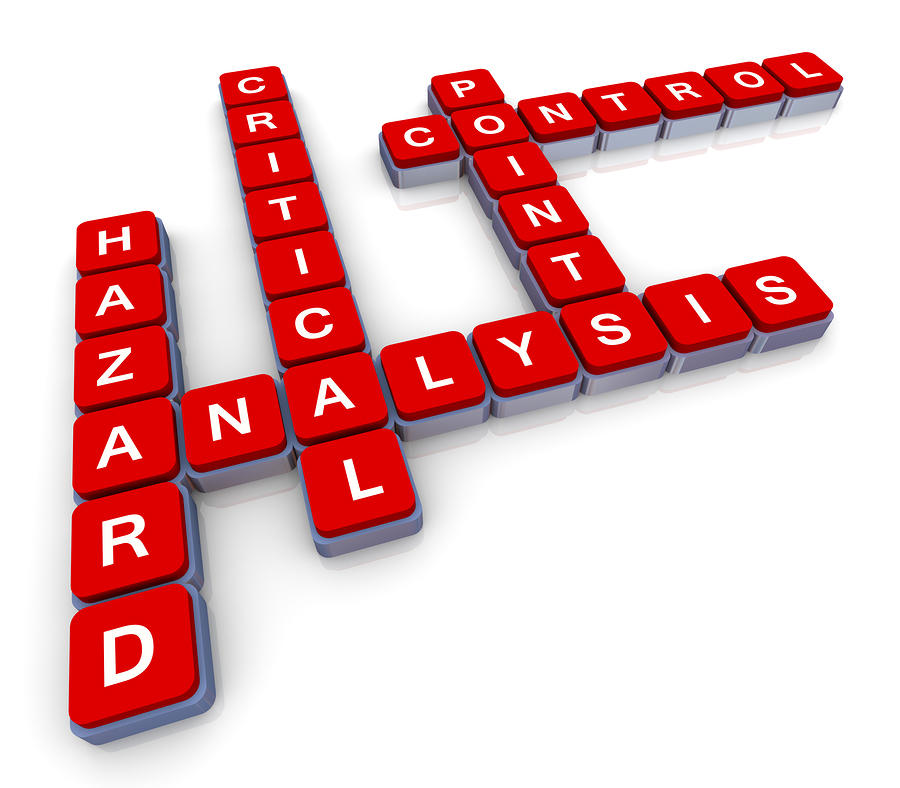HACCP Overview: Hazard Analysis Critical Control Point
Hazard Analysis Critical Control Point (HACCP) is a type of food safety management system. It originated in the 1960s in NASA’s space food program. Principles that were mandated as part of NASAs engineering practices were applied to food production for the first time. It was an end-to-end control system that managed risks throughout the entire lifecycle of the space food, from ingredient procurement to transportation, to packaging and storage. HACCP created the foundation for modern food safety standards. Simply put: it identifies, controls, and monitors risks in a systematic way.
HACCP Training and Knowledge
HACCP involves everyone – from senior management to the workers on the floor. It starts on paper, but it’s ultimately action-oriented. Knowledge about the principles of HACCP and a dedication to carrying out those principles every day is critical. No HACCP plan can be successful without this commitment from everyone.
Developing knowledge through food safety training is a key component. HACCP training may start in the classroom, but it’s how workers apply the knowledge at the floor level that’s critical to success.
Training should be practical and encourage active participation. An example would be developing a feedback mechanism for staff to share their insights into potential new risks. Specifying regular intervals for refresher training ensures knowledge stays fresh. On-the-floor signage that links HACCP with Good Manufacturing Practices and Good Handling Practices (GMPs and GHPs) can also help keep it top of mind.
Overall, a successful HACCP plan relies on engagement and integration into the culture of a workplace. There are many HACCP consulting and training groups who can help you build and maintain a plan for your plant. Each plan will be unique. HACCP plans are tailored to a specific location with specific risks. But, the mindset of HACCP – the preventative focus and science-based risk assessment – can be extended to the rest of your supply chain.
Applying a HACCP Plan
There are seven main principles behind every HACCP plan:
- Hazard analysis: Using a systematic approach, identify all possible food safety hazards. For example, one of the hazards identified may be inadequate cooking temperatures resulting in the survival of harmful bacteria.
- Identify Critical Control Points: At this stage, key points in the production process where risks can be controlled are targeted with measurable food safety control mechanisms.
- Establish critical limits: Critical limits are the limits at which the hazards remain acceptable without compromising food safety. For example, during the cook step, specific temperature and time requirements would be mandated to make sure all harmful bacteria are killed off.
- Monitoring: Monitoring is critical to ensure control measures are successful at mitigating risk. A HACCP plan would lay out when, how often, and how workers monitor a risk. For example, at the cook step, a worker would have a specific method of measuring temperature using a specialized thermometer. This would be performed at regular intervals, and the result recorded.
- Establish corrective actions: Even the most well thought out food safety plan needs to build in unexpected events. When there’s a deviation from a critical limit, control measures need to respond to bring the process back on track. Performing a root cause analysis to determine the source of the issue is a best practice, rather than attempting to diagnose and control at the end product stage. If the control measures can’t bring the product back in-line with safety requirements, a contingency plan to identify and destroy the affected products should be ready to go.
- Verification: Verification is complementary to monitoring. Validating the success of HACCP control measures can be done using methods, procedures, tests, sampling and other evaluations. Verification takes a deeper look into the process to help make sure all risks are being controlled. It can also reveal any interdependencies, and assist in root cause analysis to make sure risks are being targeted at the source.
- Record keeping: Keeping records is very important. It provides information on the success of control measures. It preserves historical information that can be used to identify trends (a key part of root cause analysis) when investigating an incident or evaluating a control measure. Regulatory and food safety certification requirements also dictate that detailed records are kept to maintain compliance during food safety audits or investigations. For example, records must be kept to document all monitoring and verification results, and responses to any deviations.
HACCP is foundational to modern food safety, and having a solid plan is the basic building block behind most regulations and food safety standards. HACCP is continuing to evolve to integrate modern training, root cause analysis and risk assessment practices. With globalization and the increasing complexity of supply chains, the importance of HACCP’s holistic approach will only continue to grow.
To have more articles like this emailed to your inbox, become a GFSR Member today!

-
 FeaturedRisk management
The Cost of a Breach: What a Cyberattack Could Mean for Food Safety Recalls
FeaturedRisk management
The Cost of a Breach: What a Cyberattack Could Mean for Food Safety Recalls
-
 FeaturedRisk management
Securing the Food Chain: How ISO/IEC 27001 Strengthens Cybersecurity
FeaturedRisk management
Securing the Food Chain: How ISO/IEC 27001 Strengthens Cybersecurity
-
 FeaturedRisk management
Revolutionizing Food Safety Training: Breaking Out of the “Check-the-Box” Mentality
FeaturedRisk management
Revolutionizing Food Safety Training: Breaking Out of the “Check-the-Box” Mentality
-
 GFSI Standards
GFSI 2025: Building Trust, Tech-Forward Solutions, and Global Unity in Food Safety
GFSI Standards
GFSI 2025: Building Trust, Tech-Forward Solutions, and Global Unity in Food Safety
-
 FeaturedFood Safety
Integrated Pest Management: Strategies to Protect Your Brand’s Reputation
FeaturedFood Safety
Integrated Pest Management: Strategies to Protect Your Brand’s Reputation
-
 FeaturedFood Safety Culture & Training
No Open Door Policy: Challenges That Impact Pest Control in Food Processing Plants
FeaturedFood Safety Culture & Training
No Open Door Policy: Challenges That Impact Pest Control in Food Processing Plants



